Re-discussing intimacy is a topic already debated in contemporary cultural and anthropological studies, the urgency of which has increased last year, because of the limited physical contact with otherness. The temporal dilution undergone by the body in a phase of forced waiting leads to destabilize the perception because the usual aesthetic or gnoseological canons are fading. Caterina Notte’s research called Predator raises the interesting question of the need to rethink and reproduce the female body, eradicating it from the rhetoric of social role and formal attractiveness, favoring Being in its transitory connotation, albeit with a humanist meaning.
Luca Sposato: I find the eclectic nature of your education curious and interesting: you studied Architecture, Economics and Commerce to get to photography.
Caterina Notte: In truth I have always liked drawing a lot, a practice that I continued when I enrolled in the Faculty of Architecture in Rome; however not even that dimension suited me very much, so, with a lot of randomness, I approached reading and the socio-economic world. Studying has always interested me, moreover it is precisely in university environments that I discovered the expressive potential of digital and scanners: one of my first works, Genetics, consisted in scanning parts of my body and reworking them, creating “clones” of myself. Then the approach to “pure” photography was natural, always preferring digital to analog, because it is more immediate, more like me. But mine is not an introspective investigation, I started from my body because it was the only one immediately available. Later it was natural to look for another visual dimension, an augmented reality that involves both the use of technology and the use of the body. I subsequently perfected myself by attending a course at the Ratti Foundation held by the artist Alfredo Jaar: it was a decisive experience for understanding the artist’s civil liability, the need to engrave reality, unhinge it, going beyond simply “making” art.
Taking a cue from this research, Genetics, it seems to me that a constant element emerges in your photography: the fragment. Reassembling to recreate while maintaining the compositional idea of a synecdoche (the part for the whole) it evokes a desire for beauty that is almost lost, not to say almost anachronistic, in such a neo-positivist era. Considering beauty as a “deformation”, a dynamic, psycho-formal energy, I found in your language a discourse not far from the Francis Bacon’s research, intended with the intention of breaking the traditional canons to restore them in a new Consciousness.
I would really like to rewrite Beauty, the concept of Beauty: the aesthetic canons have changed and I don’t see why in the world of art we should no longer talk about beauty, leaving the use and abuse of the term to the field of Fashion, for example. Obviously I don’t mean to talk about “perfection”, even if I can’t stand the rhetoric of the “defect” that has been circulating lately, especially with regard to female aesthetics, for which a woman must be “ugly”, suffer, disfigure her body, talk about ephemeral … I would like to talk about authenticity again. In my opinion, the task of art is to trigger the possibility of a new direction. As artists have always done in the past.
I appreciate that you speak of “sign”, especially in relation to photography, because it is not obvious, given the volatility of the medium, its ephemeral being, to realize its truly cutting semantic nature and its immediacy in being everywhere. Photography as a communicating, relational and meaningful subject-object reminds me of the works of Suzanne Lacy, in particular the first experiences of the seventies: the duality between individual Being and social Being, as well as the strong physiognomic accent, are characteristics that can be associated with your latest work, Predator, where the Punctum of the gauze could suggest a synthesis of the inevitable condition of being connected, rhizomatic.
For me, photography is absolutely performative, art must “perform” the real. I’m not very interested in documentary photography, which remains as a recording of a fact, but that photography is the final object, in all its importance, and leaves this mark. It is important to give photography its proper value, of how powerful it can be, like an installation, like a site-specific intervention. On the connection I agree, today it no longer makes sense to talk about “virtual”, as Luciano Floridi says today we are OnLife, it is part of our reality, there is no longer any distinction. So a “participatory” art is an art that incorporates the social, the virtual: I like the fact that through social media, a new physiognomy is born, a way of communicating, a way of thinking. In the Predator series, gauze, bandages and even the ropes with capuchin knots are precisely the links we have with our past, our present and also our future. They are bonds and they are also limits, both corporal, of the subject, and limits of the external world. For me they represent all this, they are limits that keep you tied, maybe they even give you static, but they could also block you: it is the awareness that there are these bonds, these limits, that allows you to free yourself from them, to go on without, if you wish. The gauzes do not close, they never cover eyes, hands, mouth, or the points of no-return of our body, through which we are able to communicate, to be ourselves. So they allow you to bring out your innate power as a human being. The ropes with knots, moreover, were the Franciscan rosaries that were used in Molise in the first year of a child’s life, spending the whole year with this rope: I identified these links I had with my past and I am trying to reproduce them in the photograph from a new perspective.
So does your bio, your person, enter your shot? I insist for a moment on the duality of Being, because I find this sort of double role that the author of the photograph plays very interesting, manifesting itself both behind and beyond the camera, in the subject. Indeed, author and subject of the shot merge and intertwine empathically with the viewer! The plasticity in your work is symptomatic of the will to Be Photography, yet your authorship as an artist never invades the work. I add a certain effectiveness in the images, there is a certain “primitiveness” in these bodies, a rawness. Entering the theme, it all depends on the fragility, on the acrobatic condition in which these women find themselves, in a vortex of memories, return to origins, recovery of the sacred.
Yes, you understand perfectly well: I am practically doing a personal backward journey, but one that can and must become universal. A conscious return to origins, and from there you can start. A journey backwards, both in memory and in experience. My photography is performative because it demands exactly this from the women I portray, they have to do exactly what I would do: sometimes it happens to live a whole day or two together, so that when we start the shooting, we acquire empathy. So they are free. Thanks to the path I took, I got rid of all the “feminine” facets very quickly, so I feel so free that I can photograph another woman in all her power. Indeed, the more beautiful or flawed a woman is, the more perfect for me she is. The goal is to give a perfect vision of the subject I represent, there is nothing about me that can weaken it, I really want to give Power to the woman’s body as a human being, part of the species. So I try to be as aseptic as possible, but at the same time I have to transmit all the sexuality of Being a woman, because woman, unlike man, has this definitive sexuality inside: that’s where all the power comes from. I think it is an established concept on fragility; the power of the human being lies in his weakness, in accepting it by facing abandonment: the moment you abandon yourself and understand how fragile you are, you begin to be strong. It is the same speech as the Return to the Origins. My work is a rewrite of fragility, of beauty, in view of all the power that can be. Like an atom that releases all its energy, once you discover your fragility you can only be strong. And that’s scary too, isn’t it?
I take this last note on fear to share a cinematic suggestion. Your subjects, with blindfolds that allow the viewer to see only the eyes and not the face, have a horror film legacy (Eyes Without a Face by Georges Franju, The Skin I Live In by Pedro Almodóvar, Goodnight Mommy by Veronika Franz and Severin Fiala) that have nothing to do with your path, except the fact of reflecting the theme of Fear: the discomfort of not recognizing oneself, also due to the perceptive ambiguity of feeling like a victim or executioner, is found in the visual absence of the hidden anatomical parts. Paraphrasing Jung: “Our fantasies always linger on a lack, where there is a deficiency to compensate”.
My subjects often struggle to recognize themselves after seeing the photos! The power that emanates from the subject creates discomfort and imbalance in the viewer, in fact in Predator the subject of the photograph that should apparently be a victim, is actually the predator and the viewer automatically becomes prey. Lately I have been investigating the intense and delicate moment of the transition from the childhood to the adolescent world, from which many fears concerning the body and the external world emerge. In this series the subject appropriates his fears to transform them into something useful, into a force that will, I hope, invest the viewer.
I saw you started a project on the Tik Tok channel: do you want to tell me about it?
The project is called Predator Ubiquity. I opened the Tik Tok channel, because it is one of the most followed social networks, but above all because, based on uploading videos, it is perfect for my purpose. I would like to involve people from all over the world who want to get rid of their bandages and show their degree of freedom in front of the screen. When I’ll have accumulated some videos, they will be uploaded at the same time, at a specific time, so that all platforms will be, at best, “invaded” by Predator, simultaneously.
Can we call it a virus?
That’s right, that’s it! It is no coincidence that it was conceived during the lockdown.
Info:
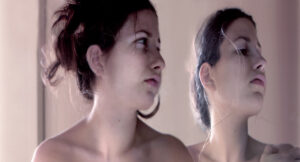 Caterina Notte, Genetics X1, Roma, 2001, courtesy the artist
Caterina Notte, Genetics X1, Roma, 2001, courtesy the artist
 Caterina Notte, Predator #21, Monaco di Baviera, 2019, courtesy the artist
Caterina Notte, Predator #21, Monaco di Baviera, 2019, courtesy the artist
 Caterina Notte, Predator #71, Porto Cervo, 2020, courtesy the artist
Caterina Notte, Predator #71, Porto Cervo, 2020, courtesy the artist
 Caterina Notte, Predator #58, Porto Cervo, 2020, courtesy the artist
Caterina Notte, Predator #58, Porto Cervo, 2020, courtesy the artist
 Caterina Notte, Predator #5, Porto Cervo, 2020, courtesy the artist
Caterina Notte, Predator #5, Porto Cervo, 2020, courtesy the artist
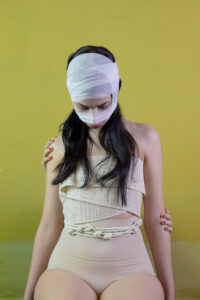 Caterina Notte, Predator #101, Porto Cervo, 2020, courtesy the artist
Caterina Notte, Predator #101, Porto Cervo, 2020, courtesy the artist
 Caterina Notte, Predator #90, Porto Cervo, 2020, courtesy the artist.
Caterina Notte, Predator #90, Porto Cervo, 2020, courtesy the artist.
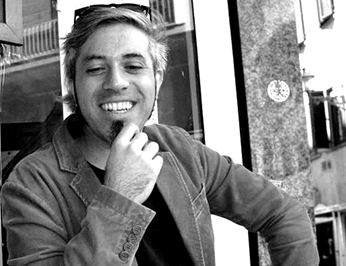
Luca Sposato was born in Tirano, Valtellina, in February 1986, he lives in Prato working in the Florentine metropolitan plain (Pistoia-Prato-Florence). Art historian, critic and curator of art and xylograph. He has curated exhibitions in private galleries, international fairs and public installations, both in Italy and abroad, including a review in historic buildings of Pistoia and the scenography of a musical show at the Textile Museum of Prato. He writes for various magazines both in print and online. His critical research starting from the art graphics, parallel practiced, focuses on the traced, physical and semiotic sign, expanding the study to the time synchronization between past and present, and cultivating curatorial practice as an artistic medium.



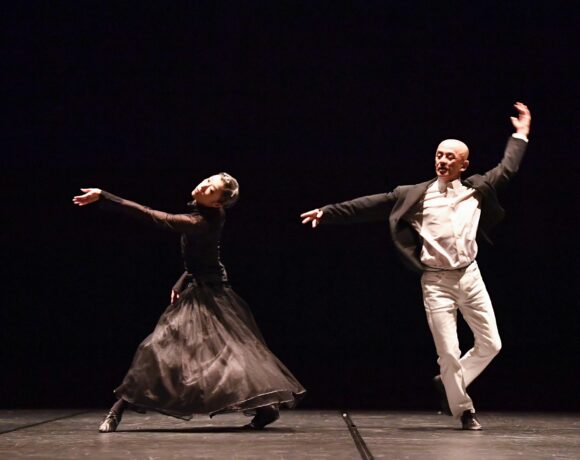
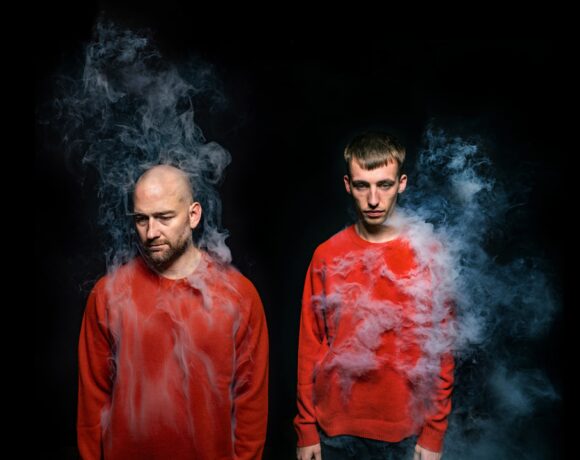

NO COMMENT